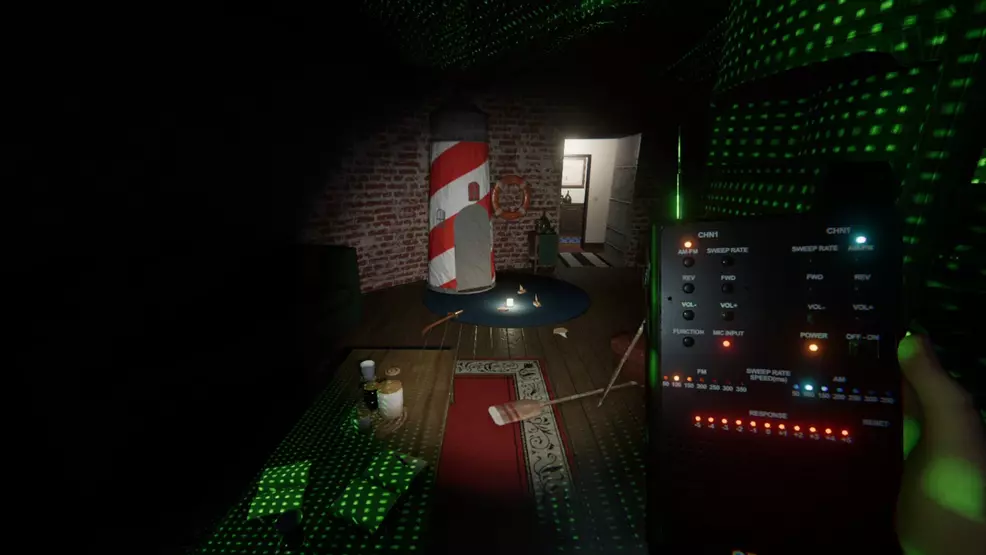Kinetic Games’ Phasmophobia began as a modest project, with a single developer realizing a vision to put players in the shoes of paranormal investigators, unleashing them into eerie environments to be tormented by various malevolent entities. Its impressive success has since inspired other social-multiplayer titles. Now, Kinetic is preparing for another significant leap. While Hollywood has taken notice with a big-screen adaptation in the works with Blumhouse Productions, the developers remain dedicated to delivering exciting new content for their players.
We recently spoke with Daniel Knight and Asim Tanvir from Kinetic Games to discuss the game’s enduring popularity and the future plans for both Phasmophobia and the development team.
The Evolution of Maps: From Expansive to Intimate
When asked about the research behind the game’s upcoming diner map, Daniel Knight explained that the team has enough house-based maps and is now focusing on unique, smaller environments. Asim Tanvir highlighted that community feedback and player data show a strong preference for smaller maps.
The developers reflected on lessons learned from creating larger maps like Brownstone High School and the Prison. Despite the significant development time, these maps see far less play. Consequently, Kinetic is currently reworking all existing maps, including the Prison and High School, to match the quality of the Sunny Meadows rework. This might involve reducing their size and making rooms more distinct, unlike the repetitive layouts found currently in the school. The Grafton Farmhouse rework, for instance, saw bedrooms streamlined to be more unique, with new elements like mannequins and dolls added.
Graphical Fidelity and Character Models
This push for graphical fidelity and a unique visual identity includes updating the infamous character models, known for their “bendy backs” that players have affectionately embraced alongside the game`s scares. While this is part of the roadmap for a higher visual benchmark, players might hope for a toggle to retain some of these quirky original models.
Kinetic Games: Beyond a One-Man Studio
With the team’s expansion, now comprising 32 individuals, Daniel Knight reflected on the shift from a solo endeavor to a full studio. He admitted that it was challenging to initially consider hiring. Even when console versions were planned, the team was only five people, prompting the decision to bring in more designers and artists.
While Phasmophobia remains the primary focus, particularly with the upcoming “Horror 2.0” update, ideas for future games are always brewing. However, no concrete new projects are currently underway.
Horror Inspirations and Developer Insights
Knight, who previously confessed to not being a frequent player of horror games, finds satisfaction in observing how Phasmophobia fosters shared fear among players, a distinct experience from other multiplayer horror titles where players often scatter. He highlighted that he didn’t conduct extensive playtesting before release, wanting to see how the community would engage with it organically. The game`s effectiveness is evident within the studio itself, with screams from jump scares frequently heard across the office from QA, art, and programming teams.
A horror film enthusiast, Knight expressed excitement about working with Blumhouse Productions on the movie adaptation, citing The Conjuring series, especially the second film, as a favorite. His inspirations for Phasmophobia notably stem from tension-based shows like The Haunting of Hill House and The Terror, rather than other video games.
Despite his limited time for gaming, Knight enjoys titles like Remnant, preferring games he can pick up and put down quickly – a design philosophy he integrated into Phasmophobia.
The Path to Success and Community Feedback
Kinetic Games has recently garnered significant media attention due to the movie deal and team expansion. Knight shared that many initially assumed Phasmophobia was the product of a massive studio, a misconception that persists even with the current 32-person team. He realized the need to hire about seven or eight months post-release, as the demanding 60+ hour work weeks became unsustainable. Before Phasmophobia, Knight was unemployed and, despite lacking extensive game development experience, pursued his ambition to work for himself, living with his parents. His modest goal of selling a thousand copies was surpassed within hours of the game`s launch.
Balancing the developer’s original vision, the community’s expectations, and the contributions of a growing team is a key challenge. Knight stated that about 90% of the direction comes from the team’s vision, much of which originates from his initial ideas that couldn`t be fully implemented at launch. The art team’s input is now invaluable. While community feedback, gathered monthly via Discord forms, informs minor changes, it doesn’t necessarily dictate the overall development path.
There are, however, some common community requests that Knight has firmly ruled out. The most frequent is the ability to capture ghosts after identification. This feature, when experimented with, diminished the game’s horror by empowering players too much. Another persistent request is playing as ghosts, which Knight rejects to maintain the game’s social, non-competitive nature.


When asked about un-explored environments, the idea of a funfair consistently comes up internally. Asim Tanvir noted that collaboration requests are common, but any crossover would need to be thematically consistent with Phasmophobia`s universe.

